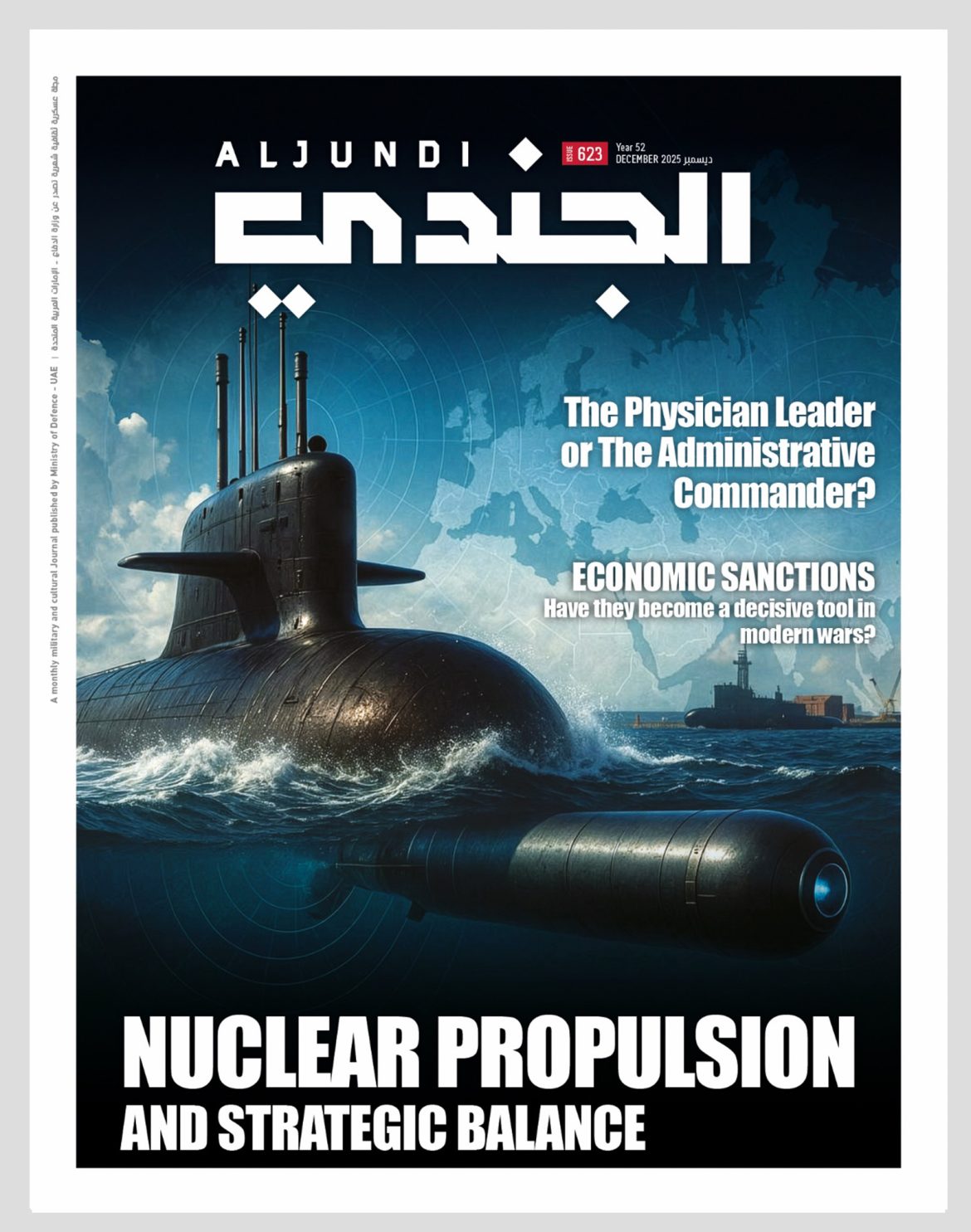In today’s digital age, the notion of national sovereignty is no longer confined to physical borders. Instead, it has expanded into new domains—chief among them, cyberspace. This transformation reflects a profound shift in the nature of international relations and defence systems, where the ability to manage data, secure digital infrastructure, and conduct cyber operations has become critical to a nation’s autonomy. Against this backdrop, modern armed forces are increasingly expected to expand their traditional responsibilities to include cyber defence, digital deterrence, and technological self-sufficiency in response to the challenges posed by a rapidly evolving digital environment.
This study explores the concept of digital sovereignty from a military perspective, with a particular focus on the role of armed forces in its development and reinforcement. It also examines the complex challenges that militaries face in securing digital sovereignty and outlines key future trends that will shape this vital pillar of national security.

Digital Sovereignty as an Operational Military Domain
Digital sovereignty refers to a state’s ability to independently manage its digital infrastructure, data, and cyber-related decisions without external technological dependence. This concept is an extension of traditional sovereignty and is increasingly recognised in military strategic literature. French defence white papers (2008, 2013) and the 2017 Strategic Review of Defence and National Security underscore the critical importance of asserting control over digital space to preserve strategic autonomy. In these frameworks, cyberspace is no longer a mere technical domain—it is a sovereign battlefield in its own right, where data has become as vital as traditional resources like energy and water.
Pierre Bellanger, CEO of Skyrock and a member of the French Centre for Higher Studies in Cybersecurity (CHECy), was among the earliest to warn that many states are relinquishing their digital sovereignty without resistance, due to delayed policy and regulatory responses. This concern was echoed in a 2024 report by the French Parliament, which stressed the need for national capabilities to secure data and information without foreign interference.
Digital sovereignty encompasses multiple operational layers:
• Physical: Servers, networks, and digital infrastructure
• Logical: Software systems and digital architecture
• Cognitive: Information flows and their interpretation
This environment transcends traditional constraints of time and space, making even domestic institutions and individuals vulnerable to cyberattacks. As a result, new military theories now regard cyberspace as a distinct battlespace, requiring dedicated offensive and defensive capabilities. Consequently, military doctrines have evolved to include concepts like cyber defence, cyber deterrence, and cybersecurity. Major powers have created specialised commands such as the United States Cyber Command (USCYBERCOM) and France’s COMCYBER to lead these efforts.
The Paradox of Digital Sovereignty
Despite the necessity of achieving digital sovereignty, armed forces must contend with a fundamental paradox: securing a system composed of inherently unreliable components. Full independence in hardware and software remains impractical. Therefore, militaries must strive for the highest possible level of autonomy by diversifying suppliers, using segmented and protected networks, and employing sovereign tools.
Key requirements for achieving operational digital sovereignty include:
• Sovereign encryption systems to ensure data confidentiality
• Fully controlled monitoring systems for data availability
• National algorithms to process and interpret digital information
Although complete technological independence is unattainable, military forces can still pursue strategic autonomy by managing risks and avoiding overreliance on any single external source. Importantly, even domestically developed digital products cannot be assumed fully secure without rigorous scrutiny. The rise of data science and machine learning has introduced a further requirement: the development of classified national datasets to train artificial intelligence and evaluate algorithms. In a world where open-source intelligence and search engine dominance influence decision-making, militaries must ensure the neutrality and reliability of digital tools. This includes creating proprietary algorithms and overseeing their training using secure, state-managed datasets.

Cyberspace as a Battlefield
Cyberspace has evolved into a full-fledged combat zone, marked by fluid dynamics, blurred boundaries, and constant asymmetry. Unlike traditional warfare, cyber operations favour the attacker, who can act with speed and deniability, complicating attribution and response. This complexity requires armed forces to develop rapid-strike capabilities that are ready to engage in both defensive and offensive cyber missions.
Moreover, cyberspace is a shared strategic arena for both military and civilian sectors. The international community continues to grapple with how to regulate this domain under international law. Compounding the challenge is the presence of not only state actors but also terrorist networks and nationalist groups capable of launching sophisticated cyber operations that go beyond espionage.
Strategic Imperatives for Armed Forces
In this context, it is imperative for national institutions—especially the military—to ensure the continuity of critical operations, economic functions, and vital infrastructure in the face of three key categories of cyber threats:
1. Direct attacks on data
2. Assaults on information systems
3. Targeted strikes on physical assets via cyber means
As digital threats become increasingly sophisticated and pervasive, the role of the military must evolve accordingly. This involves not only defending against cyberattacks but also shaping the broader digital security environment through proactive strategy, innovation, and partnerships across government, industry, and academia.
The Expanding Role of Armed Forces in Digital Sovereignty
In the contemporary security landscape, ministries of defence are playing an increasingly vital role in establishing digital sovereignty. This effort encompasses two primary responsibilities: ensuring the optimal performance of digital infrastructure and preparing forces to operate within the cyber domain. To achieve this, armed forces worldwide are undergoing extensive digital transformation, modernising both operational procedures and technological systems.
France serves as a case in point. The establishment of its Cyber Operations Command (COMCYBER) in 2017 and the Directorate General for Digitalisation and Information Systems (DGNUM) in 2018 reflects its strategic intent to address the evolving nature of cyber threats. These initiatives aim to secure national defence systems in a digital environment marked by speed, volatility, and constant innovation.
Different countries have adopted varied approaches to digital sovereignty. France, for example, promotes a balanced model that combines national autonomy with international collaboration, particularly at the European level. Its strategy includes developing national encryption tools, expanding open-source software, and reducing reliance on foreign tech providers. The United States, on the other hand, pursues digital dominance by investing heavily in advanced cyber defence and offence through institutions like USCYBERCOM, and partnering with tech giants such as Microsoft and Palantir.
The United Kingdom blends sovereignty with strategic alliances, having established a National Cyber Force through cooperation between military and intelligence agencies, while maintaining its alignment with the Five Eyes alliance. Meanwhile, Russia leans towards complete digital autonomy, emphasising tight regulatory control and the development of hybrid offensive capabilities. China adopts an assertive model by enforcing strict data laws, building national tech alternatives, integrating artificial intelligence into defence systems, and expanding its digital footprint globally to compete with US influence. Despite the differences, all these models share a core objective: breaking technological dependence and developing independent digital ecosystems resilient to geopolitical pressure and technological blackmail.
Key Military Contributions to Digital Sovereignty
1. Enhancing Cyber Defence Capabilities: Modern cyber defence is no longer reactive. It has evolved into a proactive discipline involving early threat detection, rapid response mechanisms, and crisis management frameworks aimed at protecting critical digital infrastructure. Militaries are investing in early warning systems and adaptive cyber-response strategies to ensure the continuous flow of sensitive civilian and military data. In France, the National Cybersecurity Agency (ANSSI) provides a broad defensive shield that extends beyond military applications to protect vital national sectors, underscoring cybersecurity as an integral part of national defence.
2. Developing Offensive Cyber Capabilities: Digital sovereignty is not just about defence. Strategic deterrence increasingly hinges on offensive cyber capabilities. These enable militaries to respond to cyberattacks swiftly, proportionately, and, when necessary, pre-emptively. Known as “active deterrence,” this approach demonstrates the ability to retaliate and neutralise threats before they escalate. Many armed forces now conduct advanced cyber warfare simulations to refine offensive tactics and develop new countermeasures.
3. Investing in National Software and Encryption: Dependence on foreign software exposes national defence systems to security breaches and potential surveillance. Therefore, many militaries are investing in sovereign software solutions tailored to their unique cyber needs. These include secure network management tools, command and control platforms, and encryption algorithms specifically designed to protect classified military data, even under advanced cyber assault.
4. Establishing Data Sovereignty: As cloud computing and AI become increasingly prevalent, data sovereignty has emerged as a crucial element of digital sovereignty. This concept involves ensuring that all data generated within national borders remains subject to local laws and ethical standards. It also includes enforcing algorithmic transparency and privacy regulations to protect the integrity and autonomy of digital systems.
5. Building Strategic Public-Private Partnerships: Given the fast pace of technological innovation and the growing complexity of cyber threats, no military can operate in isolation. Cooperation with the private sector is essential for maintaining operational superiority in the digital domain. Strategic partnerships with leading tech firms and private research institutions help militaries access cutting-edge solutions. For instance, the French military collaborates with Whaller to develop secure communication platforms free from foreign surveillance and vulnerabilities.
Challenges to Achieving Digital Sovereignty
1. Technological Dependence: Reliance on foreign technology remains one of the most pressing challenges to digital sovereignty. Many national defence infrastructures still depend on external providers for software, data analysis tools, and cloud services, leaving them exposed to geopolitical risks, espionage, and cyber extortion. European militaries’ widespread use of Microsoft products illustrates this vulnerability. These risks were heightened during the administration of former US President Donald Trump, whose policies raised concerns over transnational digital dependencies.
2. Legal and Political Complexities: Cyber warfare operates in a grey zone of international law. Determining the source of a cyberattack (the attribution problem) is notoriously difficult, making it challenging to develop appropriate responses. The lack of clear legal frameworks complicates the development of effective deterrent policies and makes it difficult to hold actors accountable. Political instability further undermines the resilience of cyber infrastructure.
3. High Costs and Technical Complexity: Building sovereign cyber ecosystems demands significant financial and human resources, as well as advanced technological expertise. The technical complexity of developing secure, resilient systems capable of withstanding sophisticated cyber threats poses an additional hurdle. Striking the right balance between operational efficiency and technological independence is particularly challenging in conventional military environments.
Conclusion: Towards a Sovereign Digital Future
Digital sovereignty is no longer a luxury—it is a strategic imperative for any nation seeking to preserve its autonomy in a rapidly evolving digital landscape. Armed forces play a central role in this effort, from strengthening cyber defences and building offensive capabilities to forging strategic partnerships and developing independent technological ecosystems.
While the road to digital sovereignty is fraught with challenges, it remains the only viable path to securing national interests in the face of increasingly complex and multi-dimensional cyber threats. Going forward, militaries are expected to expand their role by investing in sovereign artificial intelligence applications, advancing quantum technologies for cybersecurity, and contributing to international efforts to establish legal norms for conduct in cyberspace.
In an age where bytes are as powerful as bullets, the battle for sovereignty will be won not just on land, sea, or air, but in the silent, shadowy world of cyberspace.
By: Professor Wael Saleh – (Expert at Trends Research and Advisory Center)














